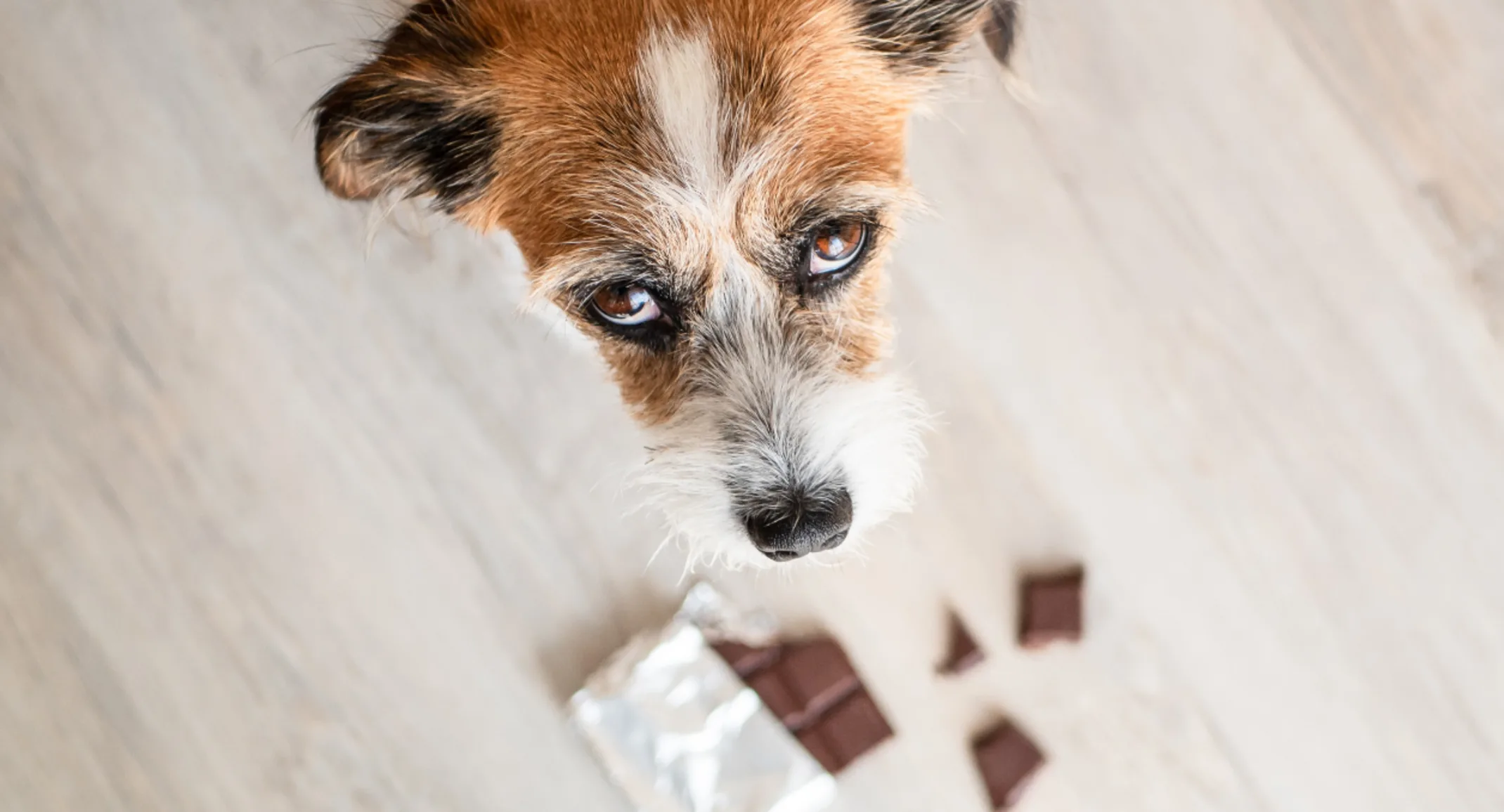My Dog Ate Chocolate: What Do I Do?
Toxic Substances

Chocolate toxicity is a very common case we see in dogs. In fact, chocolate ingestion is the most common call the Pet Poison Helpline receives. Dogs tend to smell and seek out this sweet treat even if it’s in a closed bag, out of reach, or put away, so it is important for us as pet owners to be extra diligent.
Why chocolate is bad for dogs
Chocolate is toxic to dogs because it contains substances known as methylxanthines, specifically caffeine and theobromine. Dogs metabolize, or break down, theobromine much slower than humans. Depending on your dog’s weight, even small amounts of chocolate can be very bad for your dog.
The darker and more bitter the chocolate, the more dangerous it is to dogs.
Different types of chocolate have varying amounts of theobromine in them. Generally, the more cocoa solids contained in a product, the more theobromine will be present and the more dangerous the item is for your pet. Therefore, dark chocolate and chocolate used for baking (cocoa powder or Baker’s chocolate) are much more toxic to dogs than milk chocolate or white chocolate.
Use this calculator to determine how toxic chocolate is to your dog based on their weight, how much chocolate, and what kind of chocolate they ate.
Symptoms of chocolate toxicity in dogs
Initial or minor symptoms of chocolate toxicity may include:
Diarrhea & vomiting
Agitation or hyperactivity
Drooling
Increase in thirst
Worsening symptoms may include:
Racing heart rate
High blood pressure
Heart arrhythmias
In worse cases or in high doses, ingesting chocolate may cause:
Seizures
Tremors or twitching
Cardiac failure
Muscle rigidity
Collapse
Death
Treatment for chocolate ingestion
Treatment for chocolate ingestion is dependent on how much chocolate is ingested and the symptoms the patient is having.
LOW DOSE OF CHOCOLATE INGESTED
Dogs who have ingested a low dose of chocolate may or may not need medical treatment, but it is commonly recommended to induce vomiting with activated charcoal to prevent further absorption. Some patients may be given subcutaneous fluids (under the skin) to help flush their kidneys as well as keep them hydrated if they’re already having symptoms such as vomiting or diarrhea. Anti-nausea medications may be sent home as well.
HIGH DOSE OF CHOCOLATE INGESTED
Dogs who have ingested higher doses and are showing more symptoms are recommended to be admitted to the hospital for monitoring of their heart rate and rhythm, IV fluids, and multiple doses of activated charcoal. In extreme cases, dogs are sometimes given beta blockers.
If you are diligent about treatment as soon as ingestion is noticed, most patients recover and do fine.
What to do if you think your dog has ingested chocolate:
If you suspect your cat or dog has gotten into chocolate, it is best to contact your veterinarian or your local emergency veterinary hospital for advice, call animal poison control, or go straight to your nearest open veterinary hospital.
Although cats don’t commonly get into chocolate like dogs do, it is just as toxic for them.
You may find that the veterinarian will want to perform a full exam, including a blood profile, urinalysis, and possibly an ECG to help determine if the heart is showing any abnormalities. Depending on the symptoms, your veterinarian may advise you to have your pet hospitalized for monitoring, supportive care, and follow-up blood work.
Pet Poison Helpline: (855) 764-7661
